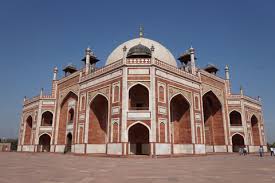Architectural Amalgam: The Fusion of Styles in India’s Historic Monuments

When you think of India's iconic monuments like the Taj Mahal or Red Fort, you probably picture them as shining examples of distinct architectural styles like Mughal or Rajput design. But here's the shocking truth - many of India's most famous historic gems are actually mind-blowing mashups of multiple influences!
From forts that fuse Hindu and Islamic aesthetics to temples blending north and south Indian craftsmanship, India's monuments are like the original architectural mullets - business in the front, party in the back. Let's take a look at some of these wild design fusions that make India's heritage sites totally unique.
Mosques Made for Sultans & Shahs
When Muslim rulers from Persian and Turkish lands began arriving in India from the 12th century onwards, their architects didn't leave their home influences behind. Many early mosques and tombs built under the Delhi Sultanate actually blended Islamic aesthetics with prominent Hindu styles.
Take the iconic Qutb Minar complex in Delhi, which melds Afghan and Persian design with elaborately sculpted Hindu embellishments and Indo-Aryan architecture details. Or the mosques at Mandu, likeJami Masjid, which flawlessly synthesize Islamic arabesque design with Hindu elements like hanging lamps and column carvings. Talk about an ingenious blending of cultures!
Not only that, but the Mughals got in on the fusion action too. While known for their ornate Persian-inspired buildings like the Taj Mahal, Mughal rulers also embraced Indian artistic traditions. You'll find abundant Hindu architectural touches like chattris (domed pavilions), finely carved jalis (lattice screens) and lush charbagh garden layouts at places like Fatehpur Sikri and Humayun's Tomb.
Holy Hindu Handiwork Mashups
But it wasn't just Muslim rulers integrating Indian aesthetics - Hindu kings were blending styles from across the subcontinent too! Just look at the wondrous temples of southern India, like the Brihadisvara Temple in Thanjavur. You'll be shocked to know that its spectacular pyramidal tower design is actually a mashup of Dravidian style from Tamil Nadu and the nagara (north Indian) design from the temples of Khajuraho.
Then there's the jaw-dropping Sun Temple at Konark, which brings together architectural techniques and craftspeople from all across India. Its breathtaking stone chariot structure contains an ingenious medley of illustrated decorations and deities from the Kalinga, chola badami, and khajuraho sculptural vocabularies. An epic monumental representation of India's diversity if there ever was one!
Clashing Cultures at The Forts
But if you really want to see multiple cultural influences collide, look no further than the epic fortresses of Rajasthan and Gujarat. The region's famous forts are like a free-for-all fusion of architectural styles from India's lengthy history.
Within the walled confines of forts like Mehrangarh and Kumbalgarh, you'll encounter an incredible diversity of buildings influenced by Hindu, Rajput, Mughal, and Sultanate aesthetics all harmoniously coexisting. Whether it's latticed sandstone palaces, whimsical hanging balconies, colorfully tiled cupolas or Persian-inspired pleasure gardens, this mashup architecture is simply mind-boggling.
So if you thought India's monuments were clearly defined by specific design styles, then get ready to have your perceptions blown wide open! These brilliant architectural amalgams creatively combine some of India's richest cultural traditions into magnificent historical wonders.